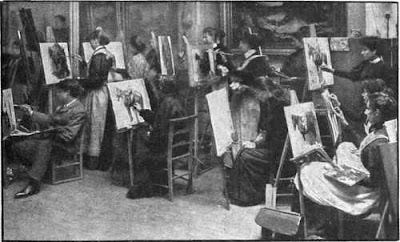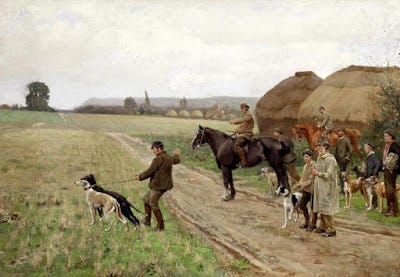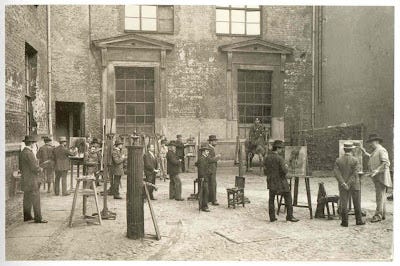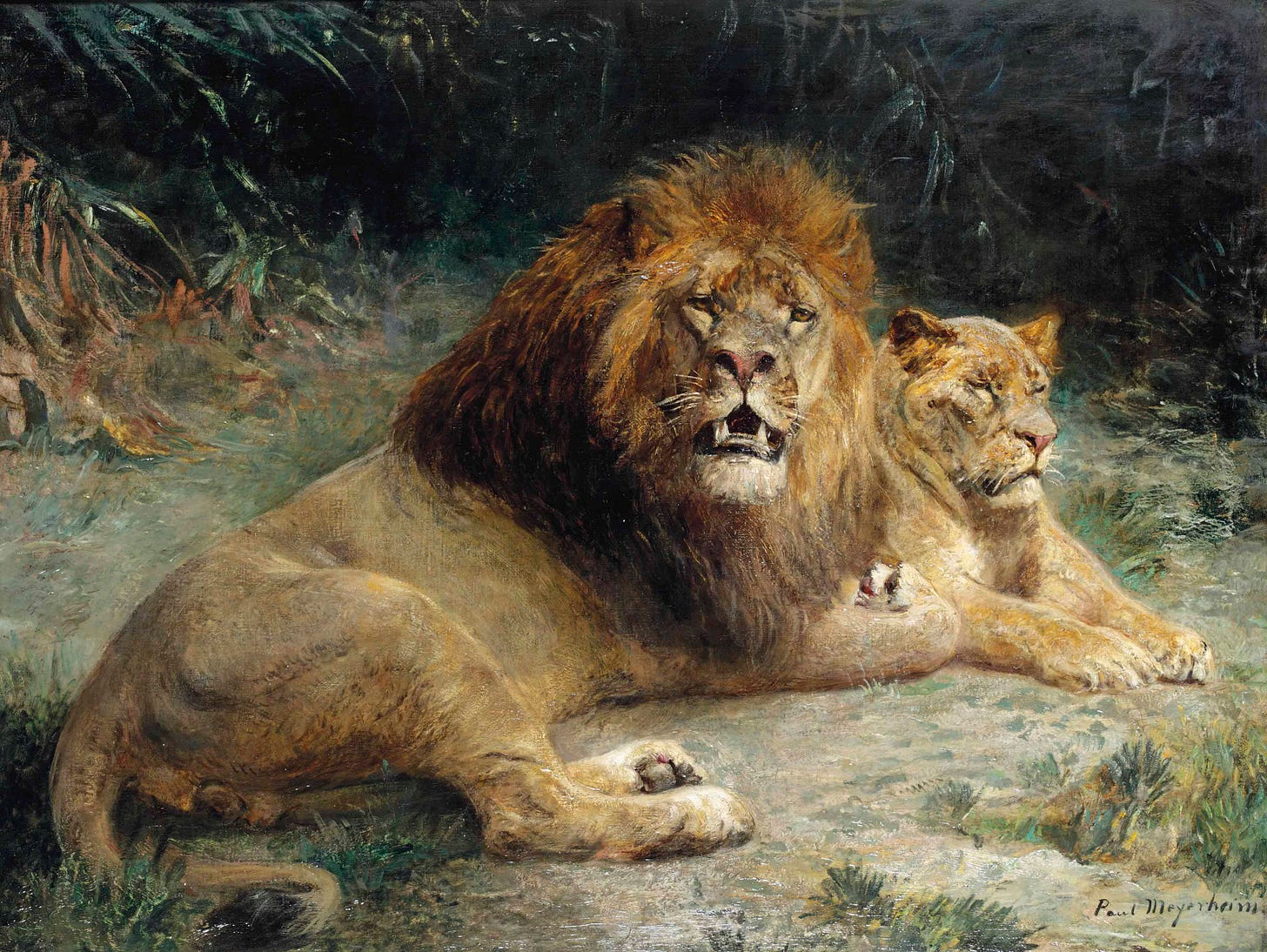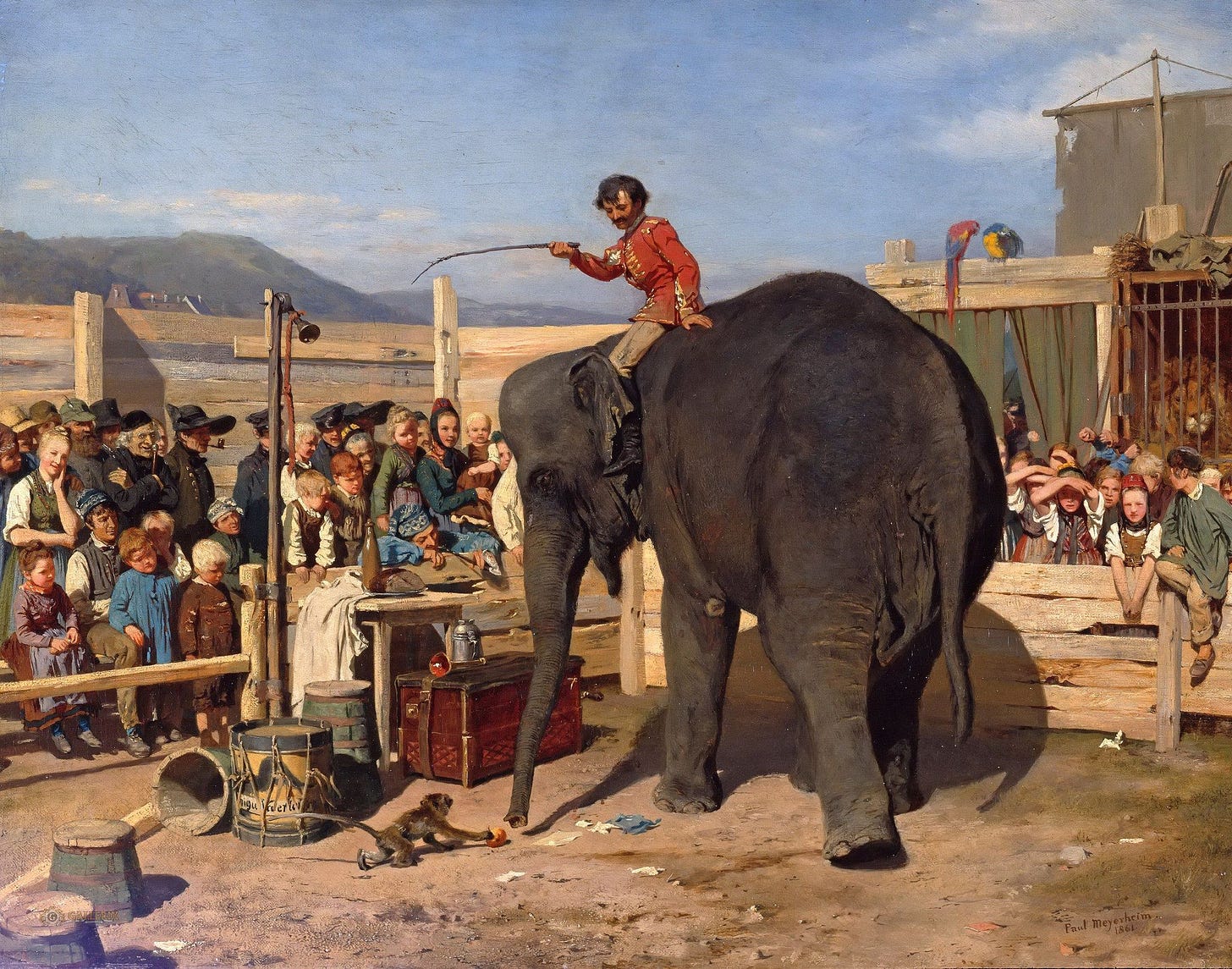Frank Calderon
William Frank Calderon (1865-1943) founded a school of animal painting in London in the 1890s. He and his students worked from live animals.
According to a contemporary account:
"The studio bustled with horses, dogs, cats, goats and the occasional donkey. At one time, he had five regular dog models, including a fox terrier, an Irish wolfhound, a foxhound and a Russian wolfhound. Students were also encouraged to visit the Zoological Gardens and sketch the animals in natural poses and study the anatomy of their chosen subject."
"Calderon also set up a summer school in West Sussex which became a focal point for animal painters who called there both to hone their skills under his guidance and enjoy some time in the country."
"Mr. Calderon warmly encourages the practice of making a number of spirited sketches of a series of chance poses, any one of which can be afterwards worked up if required into a finished picture, the student meanwhile gaining a knowledge of her subject which the most elaborate painting of the model standing in one position for an hour could never give."
A private trial, 1890 by Frank Calderon
"He also had a cast room consisting of plaster snakes, monkeys, armadillos and sheep, and endless horses and dogs, to special parts, such as heads and paws of lions and tigers – as well as many anatomically set up animal skeletons and casts of partial dissections, made by an expert, of a horse and of a calf with the outside skins removed."
"In 1911 he built a new school in conjunction with his own private house and studio at Kensington. The school was highly influential and many of the great 20th century horse and animal painters studied there. Among his students were Cecil Aldin, Lionel Edwards, Alfred Munnings, Lady Helena Gleichen, Frederick Whiting and George Studdy, besides a good many, who, with already-established reputations came to him from time to time for the special purpose of studying animals. Calderon had a thorough understanding of anatomy and published 'Animal Painting and Anatomy' in 1936, [which] was reprinted in 1975."
One of the great animal art professors in Germany was Heinrich von Zügel, who we’ll look at next.
Heinrich von Zügel
Heinrich von Zügel (1850-1941) taught animal art in Munich. He would often hire a farmhand to hold the animals steady. He was photographed here with his students in Germany.
They spent their time “drawing and painting in the daytime and discussing and drinking until midnight.” His students made precise studies indoors in the winter. In the summer they went outdoors and captured fleeting impressions of Nature. But thanks to those farmhands, the cows held fairly still.
Paul Meyerheim
Paul Meyerheim (1842-1915) was another great German animal painter and teacher. He was born in Berlin in 1842 and came from an artistic family. As a young boy, he developed a fascination with animals from frequent visits to the Berlin Zoological Gardens, where he got special access to areas normally closed to the public.
This early exposure to various animals led to his specialization in animal painting. Meyerheim received his artistic education at the Kunstakademie in Berlin and later traveled extensively throughout Europe
In 1883, he established an animal painting class at the Prussian Academy of Arts in Berlin. Meyerheim's approach to teaching animal painting was practical and hands-on. He had his master students set up in a courtyard of the Berlin academy, where they could directly observe and paint animals.
Through his teaching, Meyerheim likely passed on his keen interest in the interactions between humans and animals, a theme that fascinated him throughout his career. His enthusiasm undoubtedly influenced many of his students, including the notable animal painter Wilhelm Kuhnert.
Beyond the paywall is a list of recommended books on animal drawing and other resources.
Keep reading with a 7-day free trial
Subscribe to Paint Here to keep reading this post and get 7 days of free access to the full post archives.






